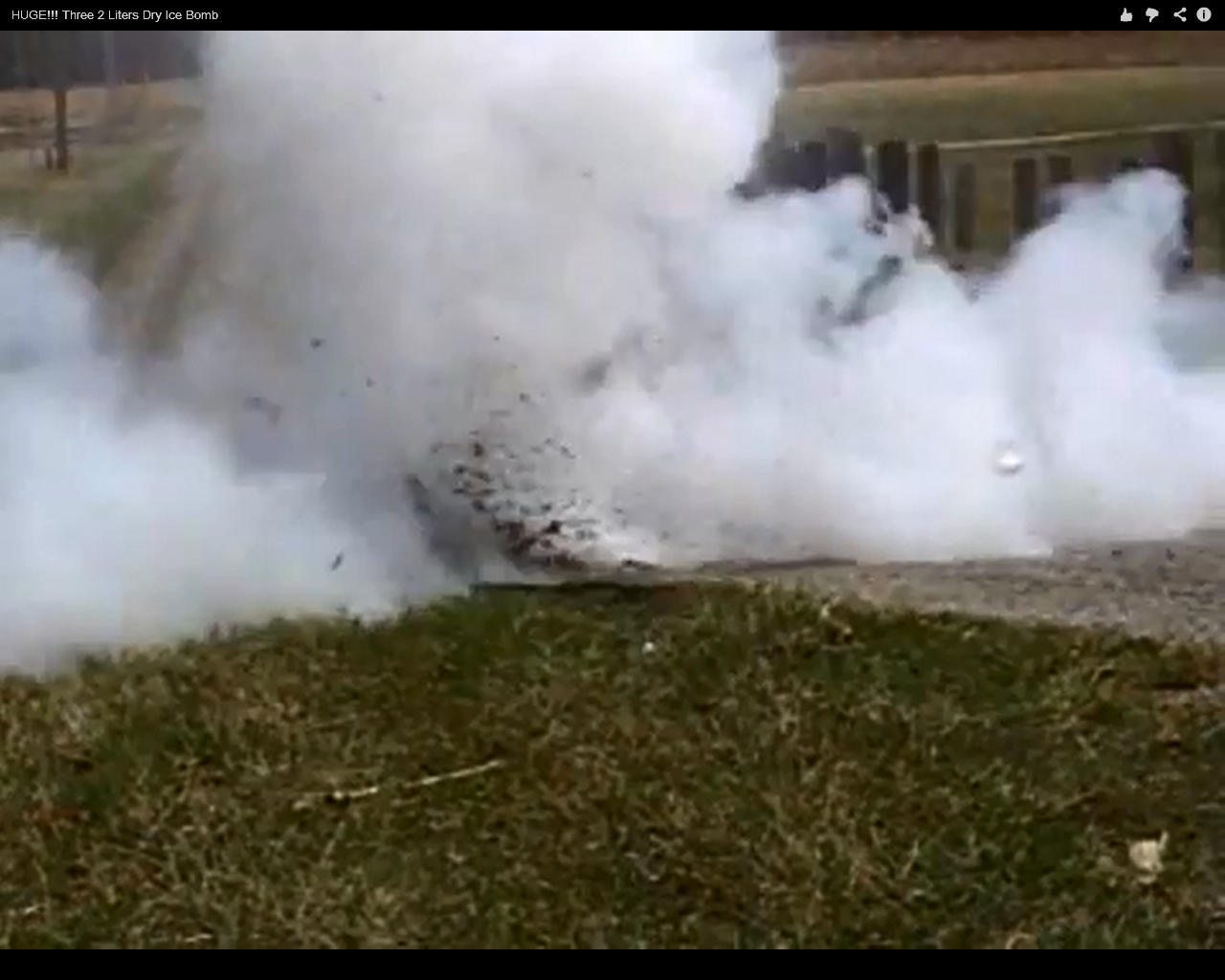What Is a Dry-Ice Bomb?

Updated on Oct. 15 at 9:10 a.m. ET.
Law enforcement officials are investigating four dry-ice bombs — two of which exploded — that were discovered Sunday and Monday (Oct. 13 and 14) at Los Angeles International Airport. Though the blasts caused no injuries or damage, air traffic was delayed from some terminals during the ongoing investigation.
A dry-ice bomb is made with dry ice, the solid form of carbon dioxide, which freezes at minus 109 degrees Fahrenheit (minus 78 Celsius). Dry ice is readily available from retail locations, and is often used to create a white, misty type of fog. The fog is made by placing pieces of dry ice in water: As the dry ice sublimates — changes from a solid directly into a gas (without melting into a liquid) — it produces the white fog seen in haunted houses and horror movies.
Making a dry-ice bomb is a fairly simple process: A container is partially filled with water, and dry ice pellets are dropped into the container, which is then tightly sealed. As the dry ice sublimates into a gas, it expands and exerts pressure on the container, which eventually bursts. [The 10 Greatest Explosions Ever]
Dry-ice bombs, like any explosive device, can be dangerous. After it's sealed, the bomb's container can burst in a few seconds, injuring the handler. A dry-ice bomb can also shoot shards of dry ice or pieces of the container, which can cause cuts and other injuries. For that reason, dry-ice bombs made in glass or metal containers — or in containers that also have nails or other shrapnel items in them — can be especially dangerous.
In many jurisdictions, dry-ice bombs are regulated. Several states (including California) prohibit them, and possession of any homemade explosive device, including a dry-ice bomb, is considered a felony in Utah. The U.S. Department of Transportation and the International Air Transport Association also regulate shipments of dry ice, because they consider it a hazardous material.
In May, a portion of Disneyland in Anaheim, Calif., was evacuated after a dry-ice bomb exploded. In that incident, an employee of Disneyland was arrested for allegedly placing the bomb in a trash can at the park. In July, a man from Redwood City, Calif., was arrested for placing a dry-ice bomb on a city street.
Sign up for the Live Science daily newsletter now
Get the world’s most fascinating discoveries delivered straight to your inbox.
Dry ice also has some important industrial and commercial uses, such as freezing and preserving food, degassing storage tanks and blast cleaning, which relies on compressed air and dry-ice pellets.
Follow Marc Lallanilla on Twitter and Google+. Follow us @livescience, Facebook & Google+. Original article on LiveScience.











